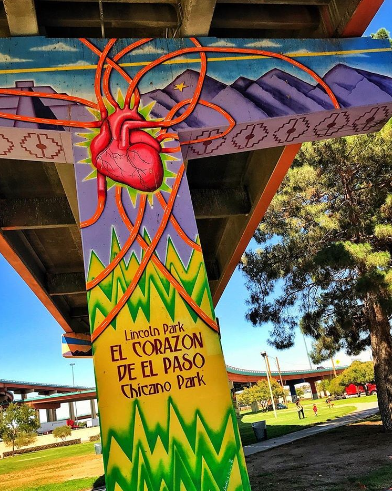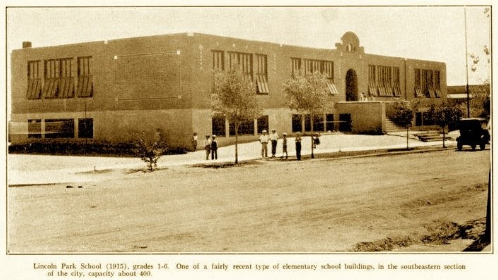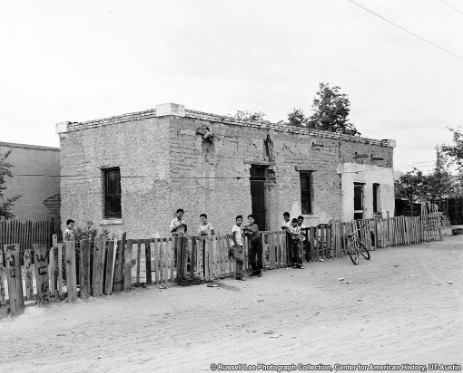The History of Lincoln Park
- Tatiana Rodriguez
- Jun 22, 2024
- 3 min read
By Jacobo Villegas
The history of Lincoln Park, also known as "El Corazón de El Paso" or Chicano Park, is one filled with a rich cultural and political background that continues to this day. The neighborhood that surrounds it has definitely changed over the years as city planning has altered the face of the park and neighborhood, but the resilience and spirit of the people have always been present. The deeply significant, yet overlooked history of the Lincoln Park community dates back to the mid-1800s, with the initial land developments of this space being planned by Hugh Stephenson.1
Stephenson, an Anglo settler born in Kentucky, is believed to be one of the first Anglo-Americans in the El Paso, Texas region.2 While settling in this area where the future park would be, Stephenson constructed a number of buildings on this land, including a chapel that once stood at the present day intersection of Rosa Street and Hammett Boulevard.3 By the late 1800s, the military moved Fort Bliss due to flooding and named this space Camp Concordia. Eventually, the creation of Concordia School would take place and would later be renamed as the Lincoln School.4
These are just a handful of the major early developments that took place in the Lincoln Park area, but it is just as important to focus on the lives of the everyday people. It just so happens that the people living in this community were at the margins of society. Due to the nature of segregated neighborhoods during the nineteenth and twentieth centuries, El Paso's neighborhoods were divided by race. The African American community in Lincoln Park was established during the U.S. Civil War, with the military having had a presence in the community. During this period, many individuals who were formerly Buffalo Soldiers ended up living in this neighborhood with their families. Lincoln Park would then go on to be a historically black neighborhood which would face several social prejudices like redlining.5
There was also a large population of Mexican American community members, which made Lincoln Park one of El Paso's first multiracial communities.6 Despite the hardships and backlash they faced, African Americans participated in a variety of day-to-day aspects in this community. In the 1890s, African American men married Mexican American women and Mexican women from Ciudad Juárez, Mexico. Furthermore, African Americans worked in a variety of service industry jobs in this area such as barbers, laundresses, housekeepers, custodians, schoolteachers, and mail carriers.
Another point of significance is with the advent of the railroad expanding into the Southwest United States, African Americans were able to acquire jobs within this industry as well.7 As time passed, the Great Migration, which occurred during World War I, brought an estimated 42,000 African Americans to the Western United States. Due to a shortage of workers during the war, many African Americans settled in El Paso hoping for opportunities.8 Another marker of the presence of this community were two African American churches existing within the Lincoln Park community in 1920, the Mount Zion Baptist Church and Philip's Chapel.9
It is quite clear that the presence of the African American and Mexican Americans communities historically coexisting in this neighborhood demonstrates the drastic changes that occurred in the nineteenth and twentieth centuries. The roles these individuals played in living their quotidian lives in a segregated neighborhood indicates just how rich and diverse this city's history is. There is plenty of insight into the structures and systems of the city when examining the people who have been placed in the peripheries of history of this place as they are relegated to a specific space.
First Image: Lincoln Park Mural, Courtesy of Lincoln Park Conservation Committee
Second Image: Courtesy of Lincoln Park Conservation Committee
Third Image: Courtesy of the Russell Lee Photograph Collection, UT-Austin
Footnotes:
1 Miguel Juarez, “History,” Lincoln Park Conservation Committee, accessed May 4, 2023, http://lincolnparkcc.org/history/.
2 Martin Donell Kohout, “Stephenson, Hugh (1798–1870),” TSHA, 1995, https://www.tshaonline.org/handbook/entries/stephenson-hugh.
3 Miguel Juarez, “History,” Lincoln Park Conservation Committee, accessed May 4, 2023, http://lincolnparkcc.org/history/.
4 Ibid.
5 Miguel Juárez, “From Buffalo Soldiers to Redlined Communities: African American Community Building in El Paso's Lincoln Park Neighborhood,” American Studies 58, no. 3 (2019): pp. 107-127, https://doi.org/10.1353/ams.2019.0043, 107-109.
6 Juarez, 109.
7 Ibid, 109-110.
8 Ibid, 111.
9 Ibid, 111-112.









Comments